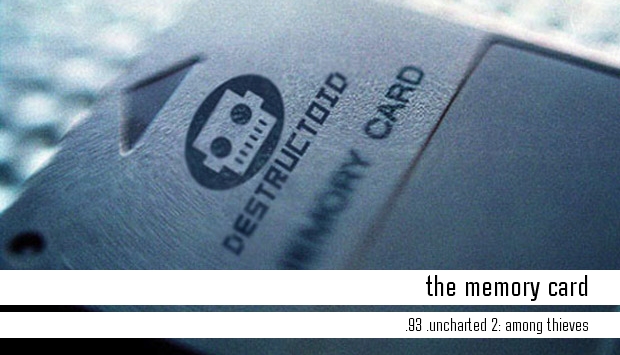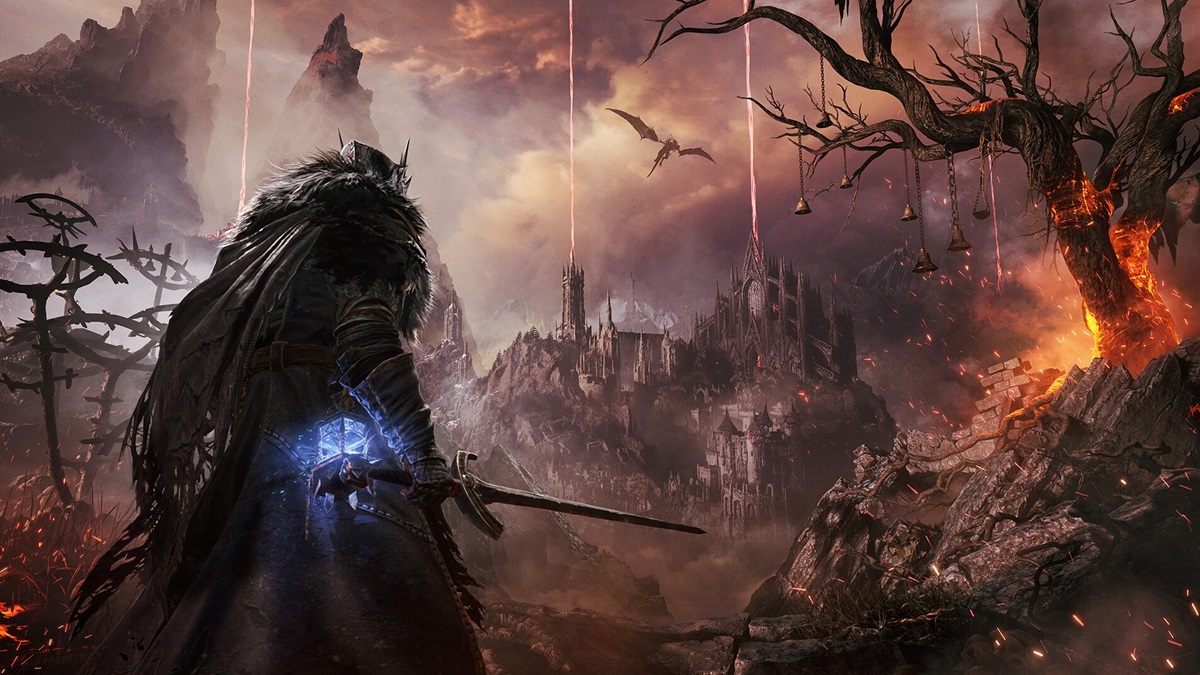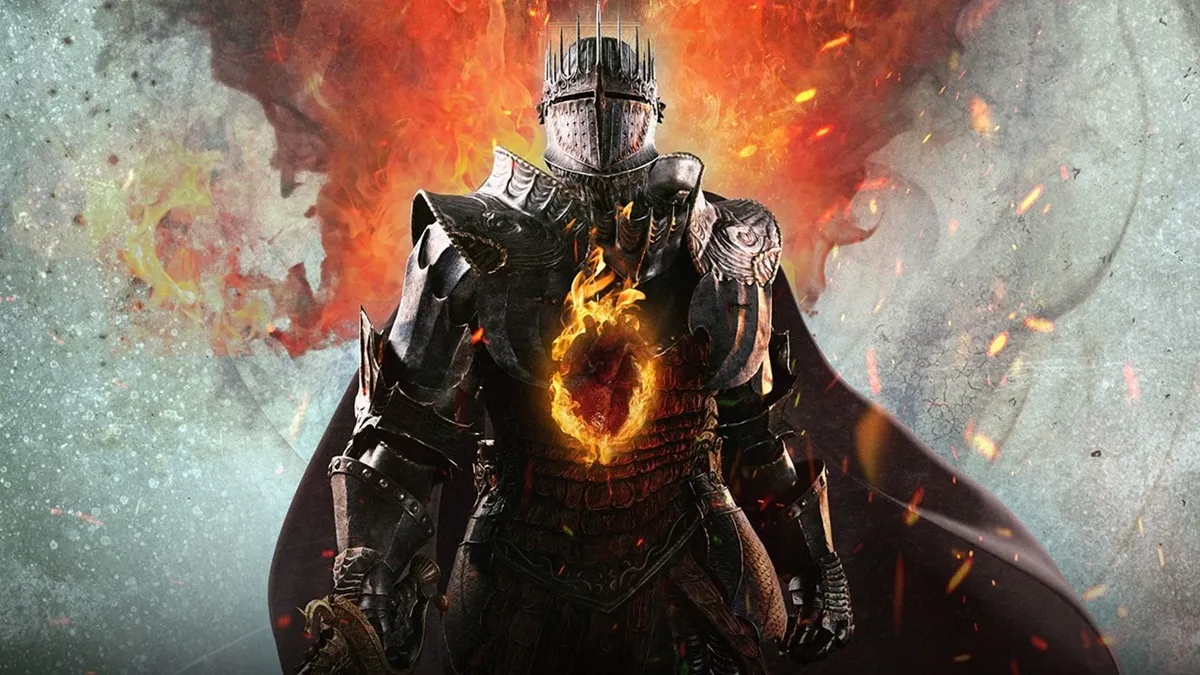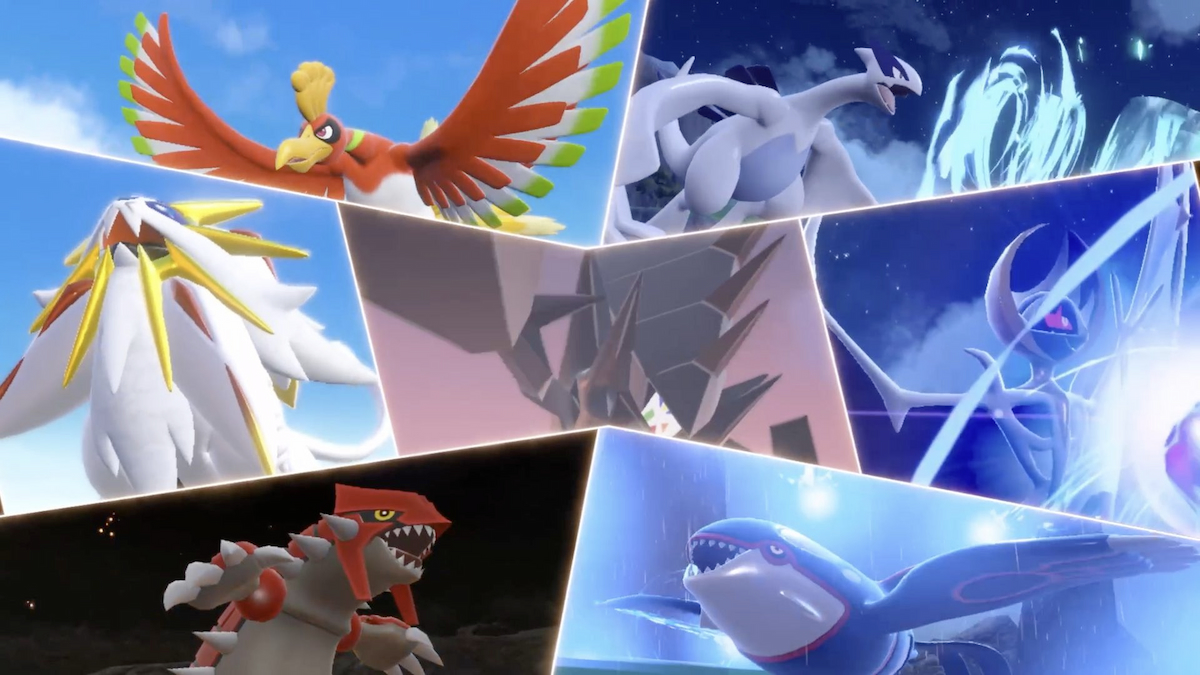In a big-budget videogame, most of the memorable moments (alliteration!) occur during the game’s extended action sequences or over-the-top boss battles. And there is nothing wrong with that! I will always love my battles with the Hydra in God of War or my nuclear explosions in Call of Duty. These moments are what make big-budget games stand out!
But once in a while, it’s nice to be surprised by one of these triple-A titles. It’s nice to encounter a moment that is just as memorable, but in a much quieter, much more unique way.
A great example of a refreshingly unique moment like this comes in Uncharted 2: Among Thieves for the PlayStation 3. The game is not without its over-the-top moments — in fact, it features some of the most impressive videogame set pieces of all time. But it’s during a surprisingly intelligent moment later in the game when Uncharted 2 transforms itself from non-stop action game to something much more significant.
The Set-Up
Uncharted 2: Among Thieves is ridiculous.
Not bad ridiculous; the kind of ridiculous that only can describe a game like Uncharted 2. Over the top ridiculous. Jaw-droppingly ridiculous. Unbelievably awesome … ly ridiculous. The game took our Game of the Year honor in 2009 for a reason. It is one amazing experience from start to finish.

In the game, you play as Nathan Drake, treasure-hunter extraordinaire and one of the most charming and likable videogame characters in modern gaming.
The basic plot of Uncharted 2 revolves around Nathan’s quest for the lost city of Shangri-La.
At the very start of the game, a very injured Nathan wakes up to a quite shocking (and, now, quite iconic!) sight. He is strapped into the seat of a train that is dangling off the edge of a cliff!

Using the acrobatic moves that he has come to perfect, Nathan manages to escape the train in the nick of time, right before it plummets into the deep valley below.
Happy to be alive (although losing none of his wit and sharp one-liners), Nathan makes his way across a vast, snow-filled mountaintop, trying to discover where he is and what to do next.

After battling a handful of enemies in the debris of the destroyed train, Nathan discovers a strange key sticking out of the snow. “What is this key?” the player asks. “And why is it in the middle of a massive snowstorm?”

To help answer those questions, the game abruptly flashes back to months earlier, as Nathan makes his way to a Turkish museum with friends (and fellow thieves) Harry and Chloe.
After being betrayed by Harry, Nathan starts an adventure that takes him over many continents, each filled with some of the most impressive set pieces ever seen in a videogame. (Seriously, for an example of one, click right here. IMPRESSIVE!)

Eventually, the story leads to the moment Nathan finds the previously-seen “key,” which he learns is actually an ancient Tibetan phurba used to unlock the secret passage leading to Shangri-La (obviously!).
With key in hand, Nathan continues his adventure.
After experiencing a fair number of twists and turns (as well as incredible action sequences!), the game leads back to the moment at the very start of the game, with Nathan surviving an epic train crash.

Escaping again as he did at the beginning of the game, Nathan once again makes his way through the snow storm, barely alive, but determined to keep moving.
After journeying through familiar surroundings, Nathan once again discovers the hidden key. At this point, though, the sequence doesn’t end with a flashback. The story continues, with Nathan reaching for the key and being attacked by a group of enemies.
A tough battle ensues, with Nathan barely emerging alive.
He continues to trudge through the thick snow.
The cold, harsh conditions, combined with his injuries, get the best of him.
Nathan collapses.

All hope seems lost.
From out of nowhere, a mysterious figure emerges from the flurry of whirling snow.

The figure approaches Nathan.
Nathan looks up. Before he even has a chance to understand what he is seeing, he passes out.
The screen fades to white.
It is here when this week’s Memory Card moment begins: Language barrier.
The Moment
As the scene fades in, Nathan is shown waking up from unconsciousness.
He is lying in a small hut on a colorful woven rug.

A young boy stands over him and stares.
Startled, Nathan jumps back. He doesn’t know where he is.
From the back of the hut, an old Tibetan man steps forward. Immediately, Nathan (and the player!) recognizes him as the figure that emerged from the snow.

The man begins to speak.
But instead of English, the man, naturally, speaks Tibetan.

Nathan doesn’t understand a word he is saying.
The man walks out the front door.
Using nothing but visual cues, Nathan eventually learns that he has to follow the strange, helpful man.
As Nathan emerges from the hut, he finds himself in a beautiful village. Farm animals and villagers look up at the stranger as Nathan walks past them. No one speaks any English, but Nathan can’t help but feel welcomed by all the concerned and caring people surrounding him.

The Tibetan man eventually leads Nathan to a hut on the other side of the village.
Inside, Nathan is reunited with his friend Elena, and also meets a man by the name of Karl Shafer.

Shafer convinces a reluctant Nathan to search for his missing members of his expedition, who may have found more clues to the whereabouts of Shangri-La.
To help him, Nathan is paired up with the Tibetan man who saved his life, revealed to be the village leader, Tenzin.
Although he speaks no English, Nathan reads Tenzin’s body language and somehow knows the village leader will help him find the lost expedition members and return him back the village safely.
From here, Nathan and Tenzin embark on an extended sequence to a huge series of ice caves in the mountains.

The caves are filled with many puzzles, some requiring the use of both characters to solve. For example, Nathan may have to boost Tenzin to a higher ledge to help him up. Or Tenzin may have to catch Nathan as he jumps for a far off cliff.
The twist to all of this is that Tenzin never speaks a word of English. He communicates only in Tibetan and with universal signs such as hand gestures and emotive expressions.

Eventually, the two begin communicating with ease, trusting and understanding each other like they have been friends for years.
After making their way through the caves and discovering a shocking secret about Shafer and his role in the quest for Shangri-La, Tenzin and Nathan head back to the village.

To their shock, the once-peaceful village has been ravaged by enemies who are looking for Shafer. Nathan watches in horror as the villagers scream and hide in their huts to avoid slaughter.
Determined to help in any way possible, Nathan and Tenzin work together again to rid the village of the horrible attackers.

The extended mission ends in victory, but not without sacrifice. Tenzin, luckily, is reunited with his loving family, but the village is destroyed.
Buildings collapse as they are engulfed in flames.
The village will never be the same.
In a final farewell, Nathan says goodbye to his new friend Tenzin. He apologizes for what happened to his village. Tenzin nods in acceptance.

The two only spent a short time with each other, but formed a bond unlike no other.
A bond formed without ever understanding a word.

You can watch the moments between Nathan and the loyal Tenzin right here:
The Impact
Tenzin is a great character by himself. He is loyal, kind, and really helps the player in times of need. This much is obvious the first minute you meet him.
And this is shocking, as most games that introduce partners late in the story end in disaster! Look at Resident Evil 4 and King’s Quest III: To Heir is Human for perfect examples. Both games are fantastic, but suffer from frustrating controls and infuriating missions once Ashley and Rosella, respectively, join the main characters later in the game.
But Tenzin being an overall great partner is not what makes his appearance so memorable.
What makes Tenzin so interesting is the language barrier between him and Nathan.
By having Tenzin not speak a word of English, the designers of Uncharted 2 could not rely on the traditional trappings that most partners bring to the table.
Tenzin could not be used to shout out tutorials or ask Nathan to do something specific (or even offer expected, witty back-and-forth dialogue like many other parts of the game). Instead, the two must communicate without really saying a word. Since Nathan does not understand Tenzin, the only logical thing is for the player to not understand him as well.
And to make sure this happens in all scenarios, Uncharted 2 features something that is even more impressive: a complete lack of subtitles.
Subtitles in modern games are kind of taken for granted. Most of the time they are used because certain players just prefer to turn them on and read the lines of dialogue on-screen, whether to pick up every detailed word or because the volume on the television is too low to understand what the characters are saying.
This is a very useful feature, but never really used outside of an aesthetic preference.
In Uncharted 2, if players activate the subtitles, Tenzin can still not be understood. Instead of translating his foreign dialogue, the game only displays “[speaking Tibetan]” on-screen every single time he talks.
This small, but highly important creative choice ensures the game will always remain in the perspective of main character Nathan. If he can’t understand Tenzin, the player never will.
So how does this language barrier affect the actual gameplay?
When Nathan wakes up in the Tibetan village and meets Tenzin for the first time, the game refreshingly slows down.
Instead of running around and making daring leaps or shooting enemies, the sequence in the village is just Nathan walking around, discovering the wonders and beauty of the village and meeting its happy, welcoming villagers.
None of the people in the village speak English, but the game manages to make you care about them — from their warm gestures to their playful responses.
And this visual communication continues in Nathan’s time with Tenzin. Never once do the two understand each other, but somehow the game makes you care for this Tibetan village leader. In a way, the major language barrier only makes you like him more.
Gone is the witty repartee between the two characters. In place of it is a genuine sense of bonding, friendship, and urgency. The two characters need each other to continue forward, but can only do so by communicating on the most basic of levels.
By the time you finish navigating the caves with Tenzin, you have a real affection for him. You have been through so much with this wonderful companion, and conquered such hardships, that you want to help him remain safe. The language barrier makes you care about him on a completely different level.
It is a subtle, almost subconscious feeling that is only multiplied by the unique form of communication.
By the time you return to the village to find it under attack, your instinct is to protect Tenzin and all the other villagers from harm.
And although the game is linear, your progression and eventual victory feels like something you are making happen due to your loyal and powerful connection to this group of people you barely know … and barely understand.
It’s all pretty brilliant.
Meeting Tenzin is not a moment that immediately stands out as memorable, but, looking back, it is easily one of my favorite sequences in all of Uncharted 2. It may not be as jaw-dropping as the other action scenes in the game, but it manages to be much more special.

The Memory Card Save Files
Season 1
.01: The return of Baby Metroid (Super Metroid)
.02: Palom and Porom’s noble sacrifice (Final Fantasy IV)
.03: The encounter with Psycho Mantis (Metal Gear Solid)
.04: The heir of Daventry (King’s Quest III: To Heir is Human)
.05: Pey’j is captured (Beyond Good & Evil)
.06: The Opera House (Final Fantasy VI)
.07: Attack of the zombie dog! (Resident Evil)
.08: A twist on a classic (Metroid: Zero Mission)
.09: A Christmas gift (Elite Beat Agents)
.10: To the moon, Mario! (Super Mario World 2: Yoshi’s Island)
.11: The Solitary Island (Final Fantasy VI)
.12: Wander’s brave friend (Shadow of the Colossus)
.13: The submerged letter (StarTropics)
.14: The legend of Tetra (The Legend of Zelda: The Wind Waker)
.15: Snake pulls the trigger (Metal Gear Solid 3: Snake Eater)
.16: Riding under the missiles (Contra III: The Alien Wars)
.17: Hover bike madness! (Battletoads)
.18: Syldra’s final cry (Final Fantasy V)
.19: Death by …grappling beam? (Super Metroid)
.20: The message in the glass (BioShock)
Season 2
.21: Crono’s final act (Chrono Trigger)
.22: Ganon’s tower (The Legend of Zelda: Ocarina of Time)
.23: It was all a dream? (Super Mario Bros. 2)
.24: The assimilation of Kerrigan (StarCraft)
.25: A McCloud family reunion (Star Fox 64)
.26: The return of Rydia (Final Fantasy IV)
.27: The battle with the Hydra (God of War)
.28: Fight for Marian’s love! (Double Dragon)
.29: The Hunter attacks (Half-Life 2: Episode 2)
.30: The Phantom Train (Final Fantasy VI)
.31: The end of The End (Metal Gear Solid 3: Snake Eater)
.32: In Tentacle We Trust (Day of the Tentacle)
.33: Peach dances with TEC (Paper Mario: The Thousand-Year Door)
.34: Learning to wall jump (Super Metroid)
.35: A leap of faith (Ico)
.36: The Master Sword (The Legend of Zelda: A Link to the Past)
.37: Thinking outside the DS (Hotel Dusk: Room 215)
.38: Running outside the castle (Super Mario 64)
.39: Del Lago! (Resident Evil 4)
.40: In memoriam (Lost Odyssey)
Season 3
.41: The tadpole prince (Super Mario RPG: Legend of the Seven Stars)
.42: Pyramid Head! (Silent Hill 2)
.43: Waiting for Shadow (Final Fantasy VI)
.44: Solid vs. Liquid (Metal Gear Solid 4: Guns of the Patriots)
.45: The birth of the cutscene (Ninja Gaiden)
.46: Insult swordfighting (The Secret of Monkey Island)
.47: A castle stuck in time (The Legend of Zelda: The Wind Waker)
.48: ‘That’s the magic flute!’ (The Wizard)
.49: Saving Santa (Secret of Mana)
.50: A shocking loss (Half-Life 2: Episode Two)
.51: The flying cow (Earthworm Jim)
.52: Blind the Thief (The Legend of Zelda: A Link to the Past)
.53: The nuclear blast (Call of Duty 4: Modern Warfare)
.54: Microwaving the hamster (Maniac Mansion)
.55: The fate of Lucca’s mother (Chrono Trigger)
.56: A fiery demise? (Portal)
.57: Jade’s moment of silence (Beyond Good & Evil)
.58: The Great Mighty Poo (Conker’s Bad Fur Day)
.59: With knowledge comes nudity (Leisure Suit Larry III)
.60: Flint’s rage (Mother 3)
Season 4
.61: The dream of the Wind Fish (The Legend of Zelda: Link’s Awakening)
.62: Leaving Midgar (Final Fantasy VII)
.63: Auf Wiedersehen! (Bionic Commando)
.64: Death and The Sorrow (Metal Gear Solid 3: Snake Eater)
.65: A glimpse into the future (Space Quest: The Sarien Encounter)
.66: Taloon the merchant (Dragon Quest IV)
.67: Scaling the waterfall (Contra)
.68: Anton’s love story (Professor Layton and the Diabolical Box)
.69: TKO! BJ! LOL! (Ring King)
.70: Giant robot fish! (Mega Man 2)
.71: The rotating room (Super Castlevania IV)
.72: The collapsing building (Uncharted 2: Among Thieves)
.73: Death by funnel (Phantasmagoria)
.74: Crono’s trial (Chrono Trigger)
.75: The blind fighting the blind (God of War II)
.76: Brotherly love (Mother 3)
.77: Prince Froggy (Super Mario World 2: Yoshi’s Island)
.78: The statue of a hero (Dragon Quest V: Hand of the Heavenly Bride)
.79: Inside the worm (Gears of War 2)
.80: The return to Shadow Moses (Metal Gear Solid 4: Guns of the Patriots)
Season 5
.81: A prayer for Ness (EarthBound)
.82: Yuna’s empty embrace (Final Fantasy X)
.83: Blast Processing! (Sonic the Hedgehog)
.84: A royal assist (The Legend of Zelda: The Wind Waker)
.85: You have chosen … wisely (Indiana Jones and the Fate of Atlantis)
.86: Death is final (Fire Emblem)
.87: A Snake in a microwave (Metal Gear Solid 4: Guns of the Patriots)
.88: The mark of a THIEF (The Legend of Zelda: Link’s Awakening)
.89: MEAT ‘SPLOSION! (‘Splosion Man)
.90: In her father’s Shadow (Final Fantasy VI)
.91: A sniper rifle and a telephone (Grand Theft Auto IV)
.92: Sacrificing Yoshi (Super Mario World)




